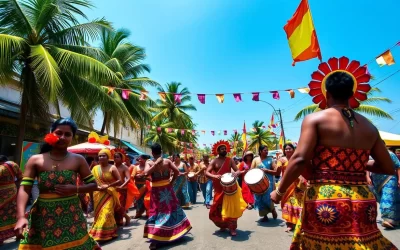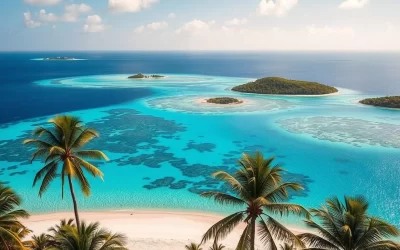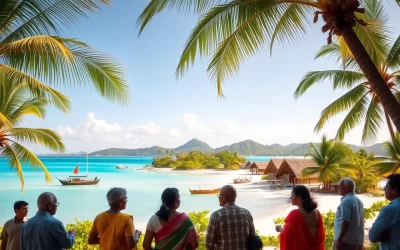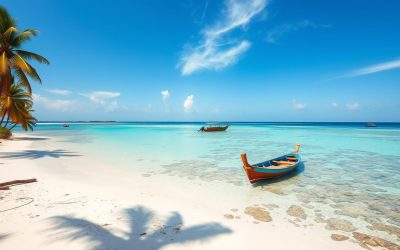As you explore the Lakshadweep islands, a union territory located off the southwestern coast of India, you’ll discover a unique linguistic landscape. This archipelago of 36 islands, with only 10 inhabited, boasts a rich cultural identity shaped by its official and native languages.
The name “hundred thousand islands” in Malayalam and Sanskrit hints at the territory’s linguistic heritage. With a population of just over 64,000, Lakshadweep maintains its linguistic diversity despite geographic isolation. You’ll learn about the designated official language and the widely spoken native dialect, Jeseri, a variant of Malayalam, and Dhivehi, predominantly spoken in Minicoy Island.
This introduction guides you through the linguistic journey of Lakshadweep, exploring the cultural significance of its languages and dialects.
The Linguistic Landscape of Lakshadweep
As you explore the Lakshadweep islands, you’ll discover a unique linguistic landscape shaped by its geographic and demographic characteristics. The Lakshadweep archipelago, comprising 36 islands, is located in the Arabian Sea, off the southwestern coast of India.
Geographic and Demographic Overview
Lakshadweep is a union territory of India, with a total land area of approximately 32.62 km. The archipelago is divided into three island subgroups. The population of 64,473 as per the 2011 census is spread across the ten inhabited islands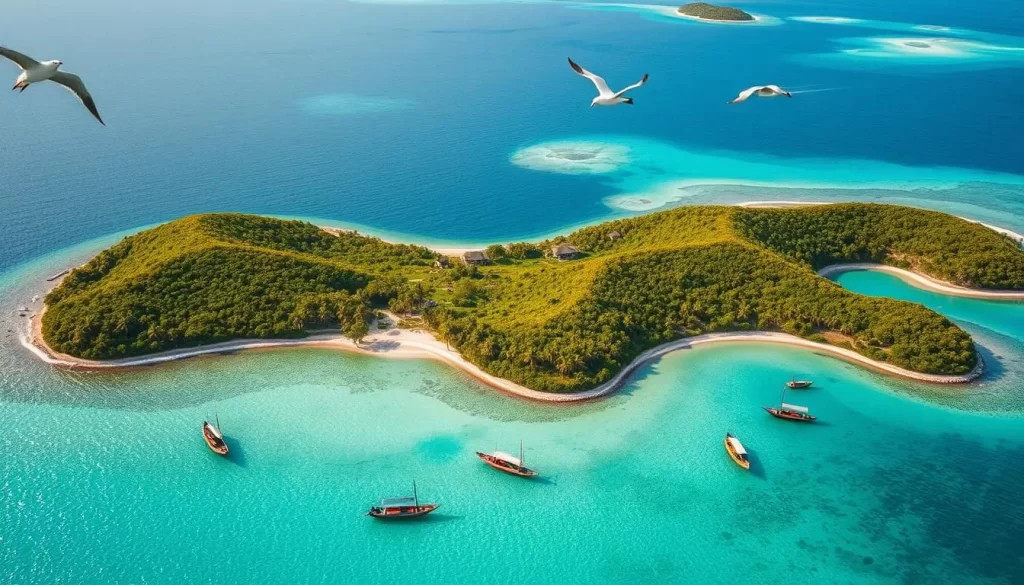
Language Distribution Across the Islands
The islands exhibit a diverse linguistic profile, with languages distributed according to historical settlement patterns. Malayalam dialects are prevalent in the northern and central islands, while Dhivehi (Mahl) is spoken in Minicoy. This distribution reflects the unique cultural and historical context of each island group.
Lakshadweep (UT), India: Official and Widely Spoken Languages
English holds a significant position in the administrative and official spheres of Lakshadweep. As a union territory, Lakshadweep’s linguistic landscape is shaped by its history and geography.
English as the Official Language
English is the official language of Lakshadweep, used primarily for administrative purposes and official communications. Unlike many Indian states, Lakshadweep maintains English as its administrative language, a legacy of British colonial rule.
Administrative Language Policies
The language policies in Lakshadweep facilitate governance across the geographically dispersed islands. While English is official, local languages like Jeseri and Mahl are widely spoken. Malayalam serves as a link language across the islands.
| Language | Region |
|---|---|
| English | Official, Administration |
| Jeseri | Amindivi and Laccadive Islands |
| Mahl | Minicoy Island |

Malayalam and Its Dialects
You’ll find that Malayalam is not just a language in Lakshadweep; it’s a unifying factor that connects the various island communities. The widespread use of Malayalam across the islands is a testament to the historical and cultural ties between Lakshadweep and the Malabar coast of Kerala.
Malayalam as a Lingua Franca
Malayalam serves as the primary lingua franca across the Lakshadweep islands. According to the 2011 census, approximately 84.17% of the population speaks Malayalam, making it the most widely spoken language in the territory. This widespread use facilitates communication among people from different islands and backgrounds.
Jeseri: The Distinctive Island Dialect
The Jeseri dialect, also known as Dweep Basha, is a unique variant of Malayalam spoken in the Amindivi and Laccadive islands. This dialect has evolved distinctively due to the geographical isolation of the islands, resulting in differences in vocabulary and pronunciation compared to the standard Malayalam spoken on the mainland. Jeseri is not just a means of communication; it’s also a marker of cultural identity for the people of Lakshadweep.
Mahl: The Language of Minicoy Island
You’ll find that Mahl, spoken on Minicoy Island, is a fascinating dialect that belongs to the Dhivehi language family. This distinctive language is a significant part of the island’s culture and identity.
Connection to Maldivian Culture
Mahl is closely related to the Maldivian culture due to its linguistic ties with Dhivehi, the official language of the Maldives. The people of Minicoy Island, known as the Mahls, share cultural practices and historical connections with the Maldives. This cultural affinity is reflected in their language, customs, and traditions. The connection to Maldivian culture is a unique aspect of Minicoy Island’s identity within the Lakshadweep islands.
Unique Features of Mahl
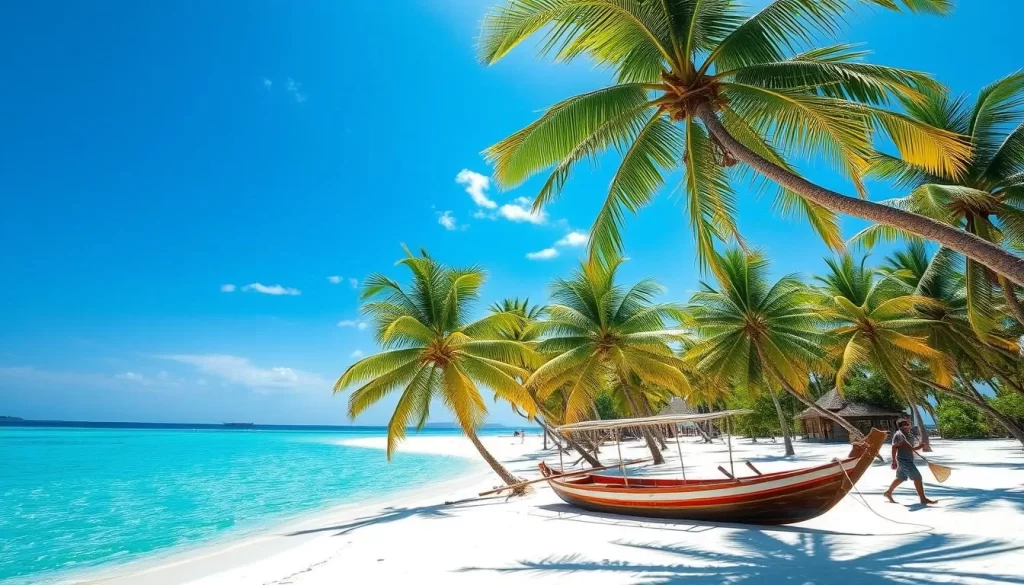 Mahl has distinct linguistic features that differentiate it from other languages spoken in the Lakshadweep islands. It has its own vocabulary, grammatical structures, and phonetic characteristics that are shaped by its history and cultural exchanges. The language preserves the island’s heritage and maintains its connection to the Maldivian cultures rather than mainland Indian influences.
Mahl has distinct linguistic features that differentiate it from other languages spoken in the Lakshadweep islands. It has its own vocabulary, grammatical structures, and phonetic characteristics that are shaped by its history and cultural exchanges. The language preserves the island’s heritage and maintains its connection to the Maldivian cultures rather than mainland Indian influences.
Historical Evolution of Languages in Lakshadweep
Delving into the history of Lakshadweep, you’ll discover a complex linguistic landscape shaped by centuries of cultural exchange. The islands have a rich history dating back to at least 1500 BCE, as evidenced by archaeological findings in Kalpeni.
Pre-Islamic Linguistic Influences
The pre-Islamic period saw significant linguistic influences, including connections to ancient Tamil and Sanskrit. The name “Lakshadweep” itself, meaning “hundred thousand islands,” reflects the territory’s ancient linguistic ties to Sanskrit and Malayalam. You can still see these influences in the local dialects and the matrilineal family structure terminology.
- References to the islands in Buddhist Jataka tales from the 3rd century CE.
- Possible connections to ancient Tamil and Sanskrit.
Impact of Islamic Culture on Language
The arrival of Islam in the 7th century CE dramatically transformed the linguistic landscape, introducing Arabic vocabulary and Persian influences. Despite religious conversion, certain pre-Islamic linguistic features persisted, particularly in traditional vocabulary related to fishing and navigation used by the islands’ inhabitants along the coast.
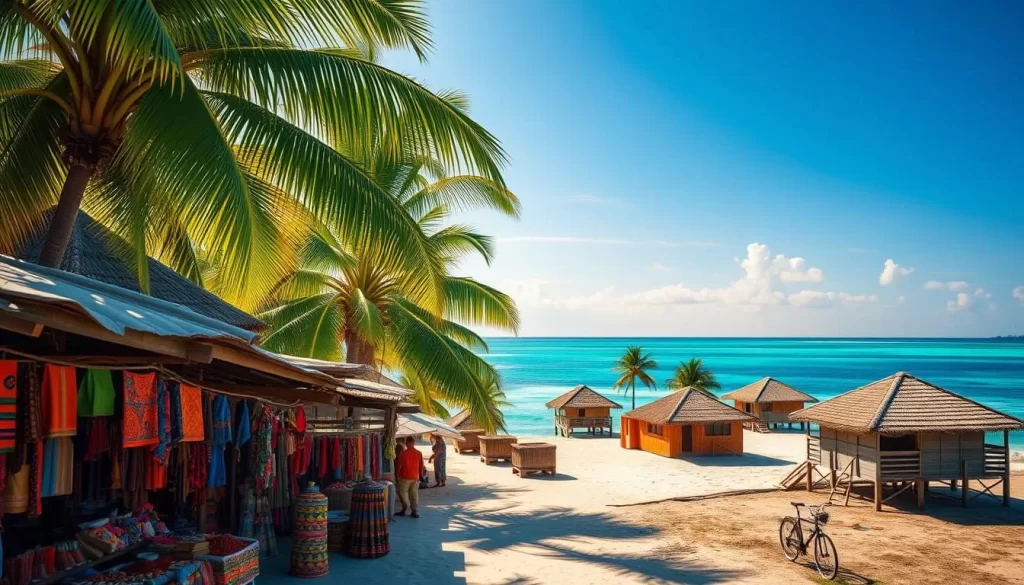
Language and Cultural Identity
Lakshadweep’s linguistic landscape is a crucial aspect of its cultural identity, reflecting the history and traditions of its inhabitants. The islands’ unique cultural heritage is preserved through the languages spoken by its people.
Role of Language in Island Communities
Language plays a vital role in the daily lives of the island communities, serving as a powerful marker of their cultural identity. It helps preserve their unique island heritage despite modernization. The distinct vocabulary related to fishing, navigation, and coconut cultivation reflects centuries of specialized knowledge developed by these island communities.
Linguistic Markers of Cultural Heritage
The language variations between islands create micro-identities within the broader Lakshadweep culture. Each island community maintains linguistic markers that distinguish them from their neighbors. For instance, the preservation of matrilineal family terms in the local languages offers insights into the pre-Islamic history of the islands and their cultural evolution over the centuries.
| Island Group | Primary Language | Cultural Distinctions |
|---|---|---|
| Lakshadweep Islands (except Minicoy) | Malayalam | Matrilineal kinship system, influenced by Mappila culture |
| Minicoy Island | Mahl | Ethnic ties to Maldives, distinct dialect |
Language Preservation Efforts
You might be surprised to learn that Lakshadweep’s high literacy rate has both positive and negative effects on the preservation of its indigenous languages. While education has opened up new opportunities, it also poses a challenge to the traditional dialects.
Challenges to Indigenous Dialects
The influence of mainstream media and education in standard languages has led to a decline in the use of local dialects among the younger population. As a result, efforts are being made to document and preserve these dialects.
Educational and Cultural Initiatives
Educational institutions throughout the islands are working to balance standard language instruction with efforts to document and preserve local dialects. Cultural initiatives, including language festivals and dialect documentation projects, are also helping to maintain linguistic diversity.
| Initiative | Description | Impact |
|---|---|---|
| Language Festivals | Celebrating local languages and dialects | Promotes cultural heritage |
| Dialect Documentation | Recording and preserving local dialects | Preserves linguistic diversity |
| Controlled Tourism | Government-regulated tour packages | Minimizes negative impacts on local culture |
Multilingualism in Daily Life
You’ll find that multilingualism is woven into the fabric of everyday life in the Lakshadweep Islands. Residents navigate between multiple languages depending on the context, making language use highly adaptable and context-dependent.
Code-Switching and Language Mixing
Code-switching between Jeseri, standard Malayalam, English, and in some cases Mahl, is a common phenomenon in everyday conversations on the islands. This code-switching reflects the practical multilingualism of the Lakshadweep Islands, where different languages serve various purposes in daily interactions.
Language Use in Tourism and Commerce
The growing tourism economy has created a demand for multilingual skills, particularly in interacting with visitors through various tour packages. As a result, locals have developed proficiency in languages useful for commerce and tourism, alongside traditional dialects used in fishing and coconut production. The tuna industry, a significant part of the local economy, also influences language use.
Conclusion: The Future of Languages in Lakshadweep
Lakshadweep’s unique cultural identity is reflected in its linguistic diversity, shaped by its history and geography. As tourism grows, it brings both opportunities and challenges for language preservation. You see how traditional economic activities like fishing and coconut production help preserve specialized vocabulary. The future of Lakshadweep’s languages will likely balance practical multilingualism with conscious preservation efforts. This balance will be crucial in maintaining the islands’ distinct linguistic identity.
The above is subject to change.
Check back often to TRAVEL.COM for the latest travel tips and deals.

